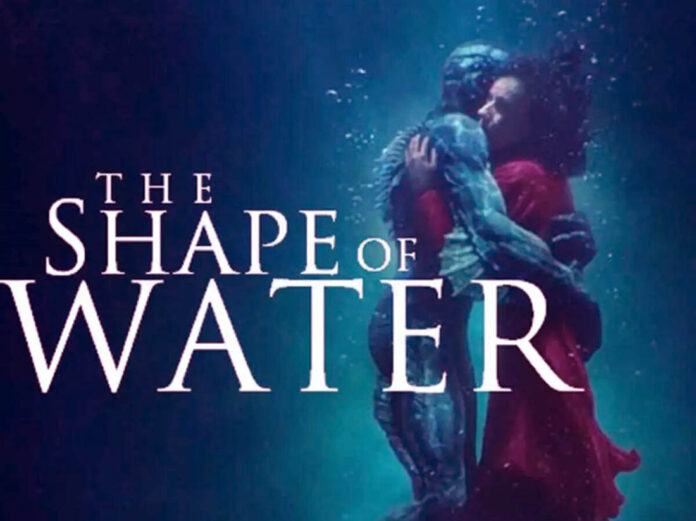Guillermo del Toro, the visionary Mexican filmmaker, has carved a niche for himself in the world of cinema with his unique blend of fantasy, horror, and fairy tale elements. One of his most remarkable works, “The Shape of Water” (2017), not only won the hearts of audiences worldwide but also secured four Academy Awards, including Best Picture and Best Director. Del Toro’s fascination with monsters, coupled with his exploration of love in unconventional forms, takes center stage in this visually stunning and emotionally charged masterpiece.
Page Contents
Monsters as Metaphors
Del Toro’s films often feature otherworldly creatures that serve as metaphors for the marginalized and misunderstood in society. “The Shape of Water” is no exception. Set against the backdrop of the Cold War era in the early 1960s, the film introduces us to Elisa Esposito (Sally Hawkins), a mute and lonely janitor working at a high-security government laboratory.
The story unfolds as Elisa discovers a mysterious amphibious creature (Doug Jones) being held captive in the facility. As she forms a secret bond with the creature, who becomes known as “The Asset,” del Toro invites the audience to consider the nature of monsters and humanity’s tendency to fear the unknown. The creature, though visually striking and initially perceived as a threat, quickly becomes a symbol of vulnerability, innocence, and the desire for connection.
Read Also : Mad Max: Fury Road(2015) – The Making of the Post-Apocalyptic Masterpiece

Love Beyond Words
Elisa’s inability to speak becomes a powerful narrative tool, emphasizing the film’s exploration of love transcending language and societal norms. In a world dominated by verbal communication, Elisa’s connection with The Asset is built on empathy, understanding, and shared emotions. Del Toro challenges conventional notions of love by presenting a mute woman finding a soulmate in a creature from the depths of the Amazon River.
The film beautifully captures the nuances of their relationship, using intricate sign language, subtle gestures, and the universal language of emotion. The unconventional romance between Elisa and The Asset challenges viewers to reconsider preconceived notions of love, urging them to embrace a more inclusive and open-minded perspective.
Sally Hawkins’ portrayal of Elisa is a masterclass in non-verbal acting, conveying a range of emotions that speak volumes without uttering a single word. Her performance is complemented by Doug Jones, who brings The Asset to life with a combination of practical effects and CGI, creating a creature that is both fantastical and deeply human.
Cold War Parallels
Del Toro uses the film’s Cold War setting to draw parallels between political paranoia and the fear of the unknown. The government’s relentless pursuit of The Asset for potential military applications mirrors the era’s arms race and the dehumanization of perceived enemies. In this context, Elisa’s act of defiance and love becomes a powerful commentary on resisting conformity and embracing diversity.
The Supporting Cast
“The Shape of Water” boasts a stellar supporting cast that contributes to the film’s richness. Octavia Spencer shines as Elisa’s co-worker and friend, Zelda, injecting humor and warmth into the narrative. Michael Shannon delivers a chilling performance as the antagonist, Colonel Richard Strickland, whose rigid adherence to authority and disdain for the “other” serve as a foil to Elisa’s compassionate and open-hearted nature.
Richard Jenkins, portraying Elisa’s neighbor Giles, provides a poignant portrayal of loneliness and the search for connection. His character’s struggles with his own identity and the societal norms of the time add another layer of depth to the film’s exploration of love and acceptance.

Visual Splendor
Del Toro’s films are renowned for their visual splendor, and “The Shape of Water” is no exception. Cinematographer Dan Laustsen captures the film’s rich palette with a dreamlike quality, accentuating the fantastical elements of the narrative. The production design by Paul D. Austerberry creates a world that is both nostalgic and otherworldly, seamlessly blending the mundane with the extraordinary.
The use of water as a recurring motif is both symbolic and visually stunning. From the rain-soaked streets to the underwater sequences, water becomes a metaphor for fluidity, transformation, and the interconnectedness of all things. The film’s visual poetry enhances the emotional resonance of the story, making it a feast for the eyes as well as the heart.
Musical Score
The film’s emotional depth is further heightened by Alexandre Desplat’s evocative musical score. The hauntingly beautiful melodies complement the narrative, underscoring moments of love, suspense, and triumph. Desplat’s score, which won an Academy Award, becomes an integral part of the film’s emotional fabric, enhancing the viewer’s connection to the characters and their journey.
Read Also : La La Land(2016) – The Choreography Magic in the City of Stars
Conclusion
Guillermo del Toro’s “The Shape of Water” stands as a testament to the power of storytelling to transcend boundaries and challenge societal norms. Through the lens of a fantastical romance between a mute woman and an amphibious creature, del Toro explores the themes of love, acceptance, and the beauty of embracing the “other.”
The film’s success lies not only in its stunning visuals, exceptional performances, and captivating score but also in its ability to resonate with audiences on a deeply emotional level. “The Shape of Water” is a celebration of the unconventional, a plea for empathy, and a reminder that true love knows no bounds. In del Toro’s world, monsters are not to be feared but understood, and love is a force that transcends the limitations of language, society, and even species.


